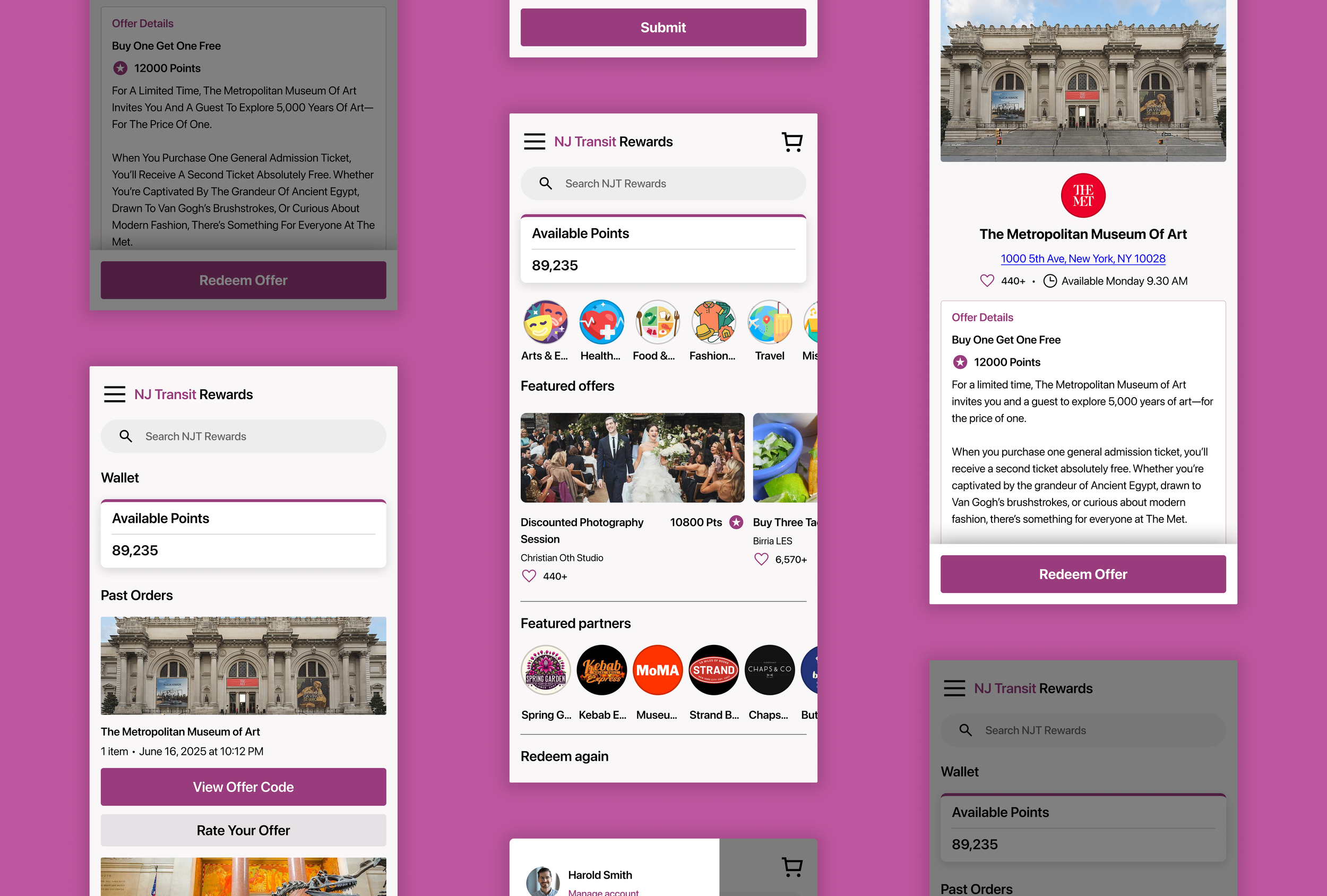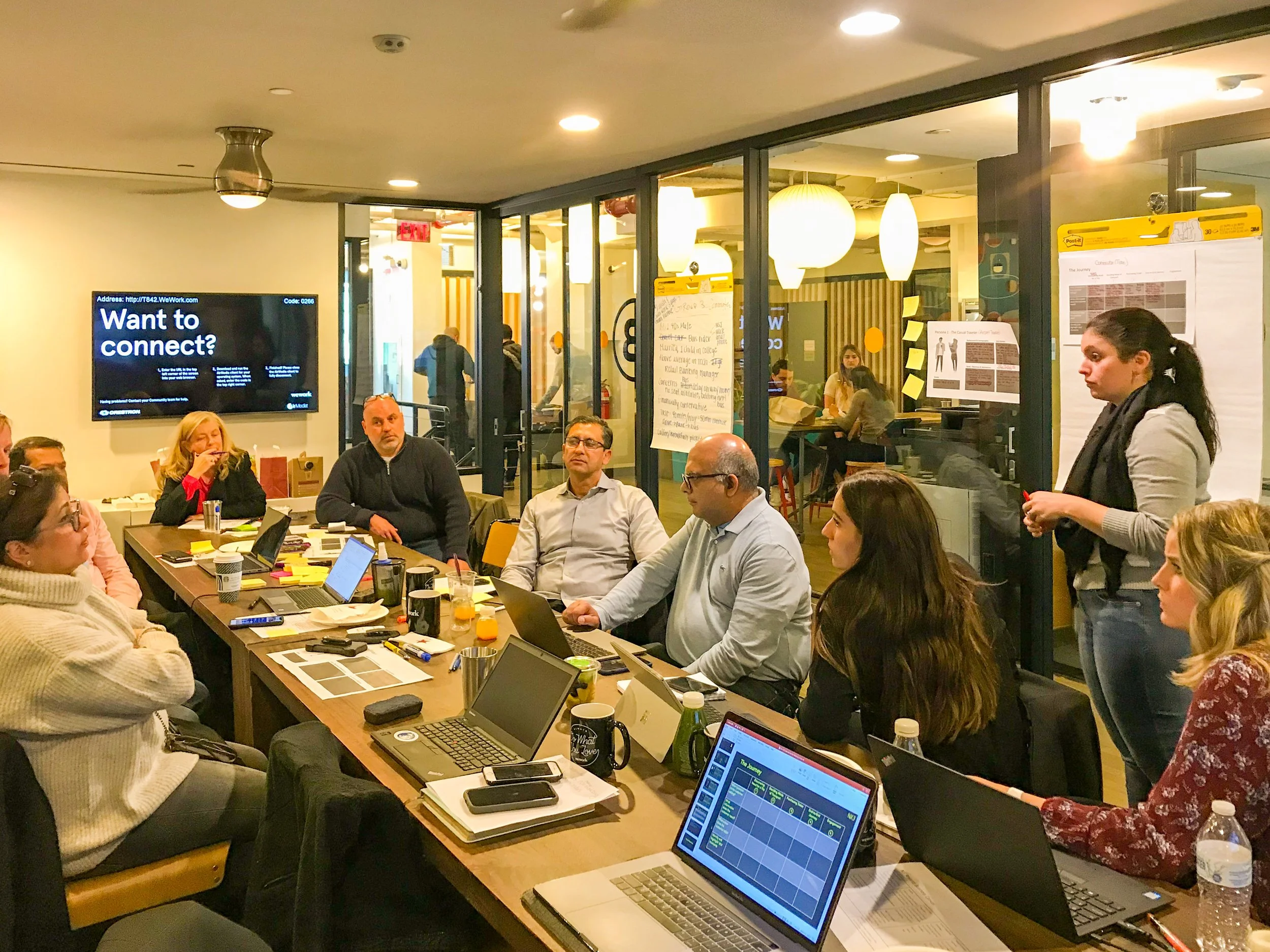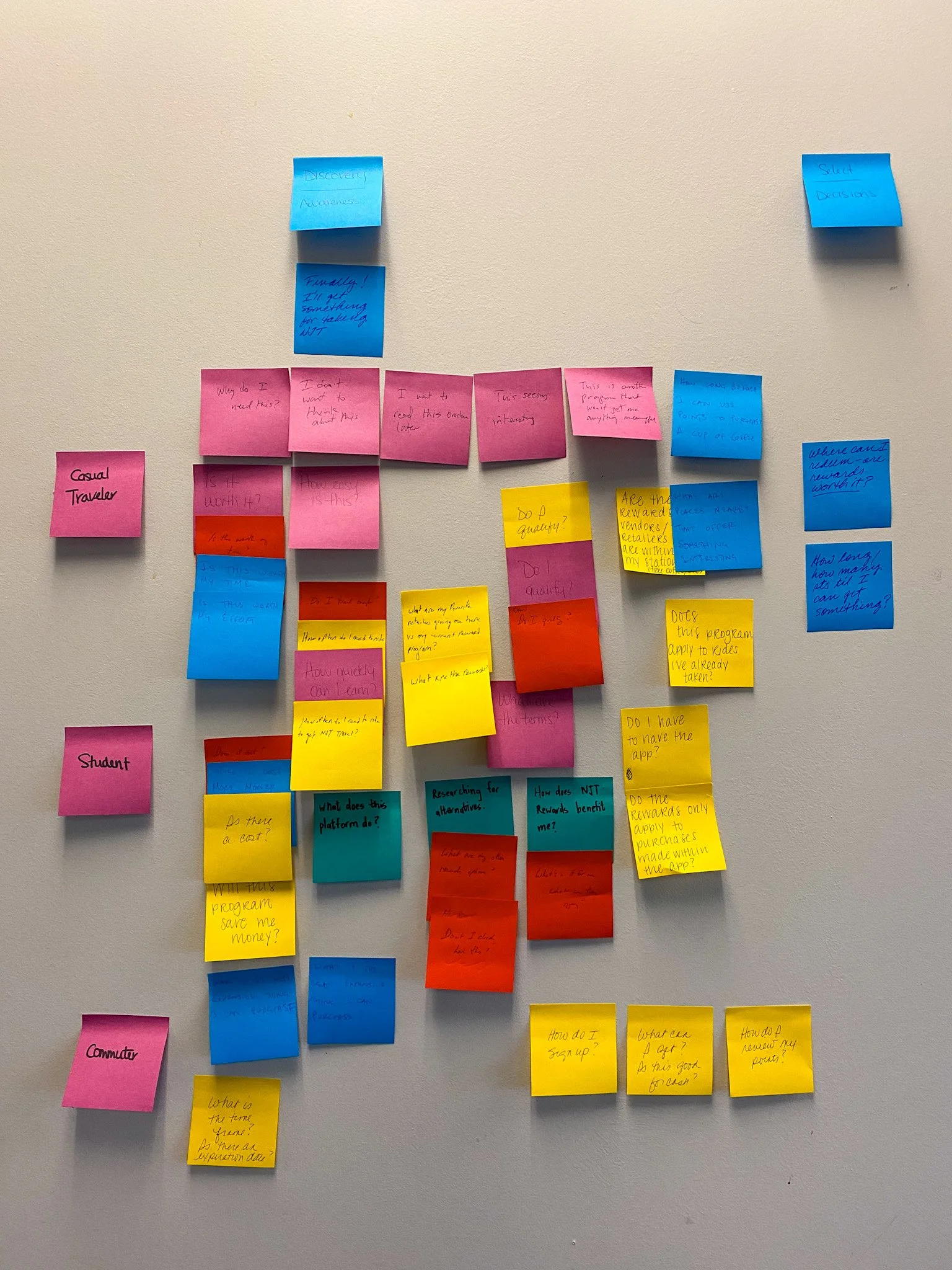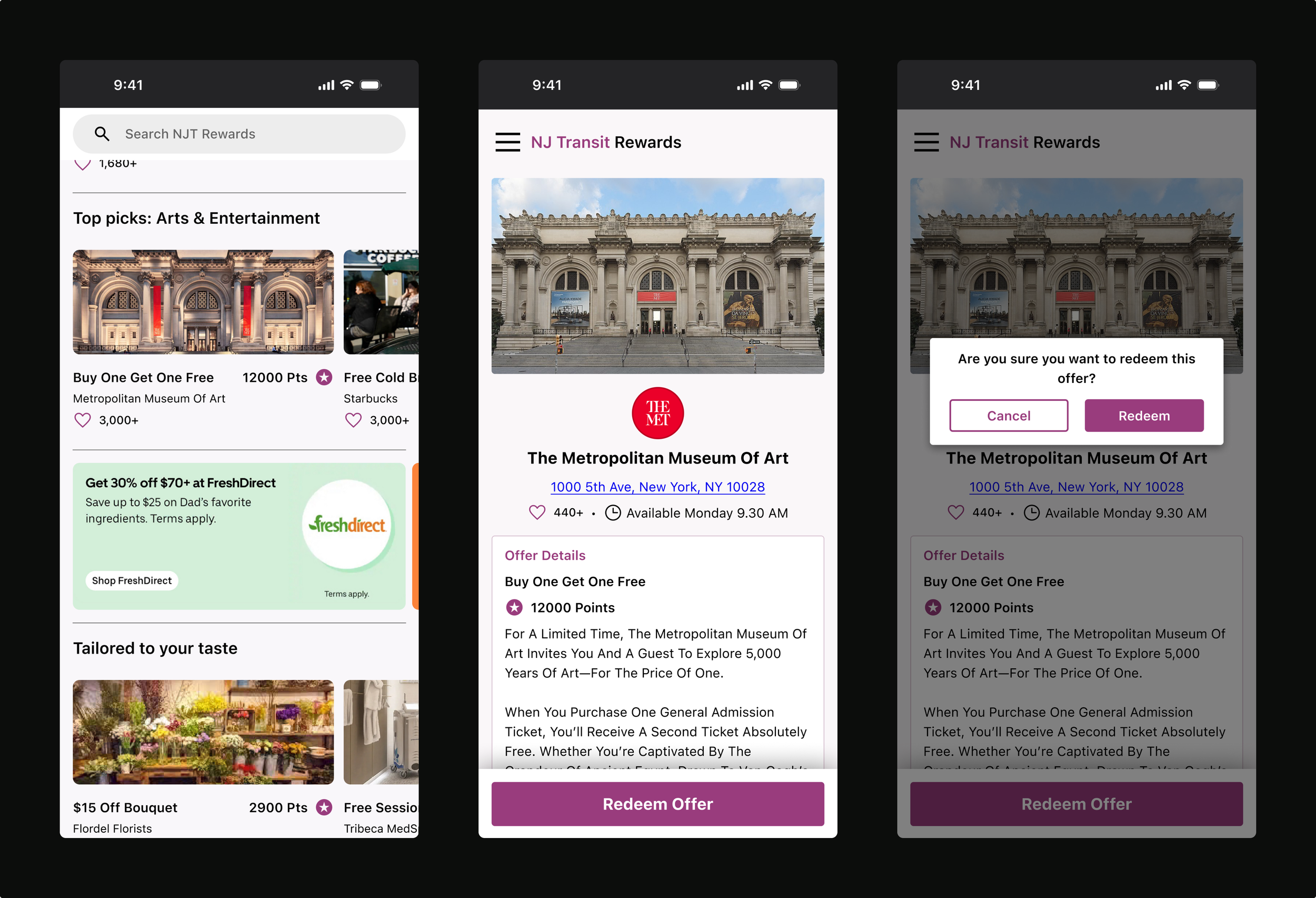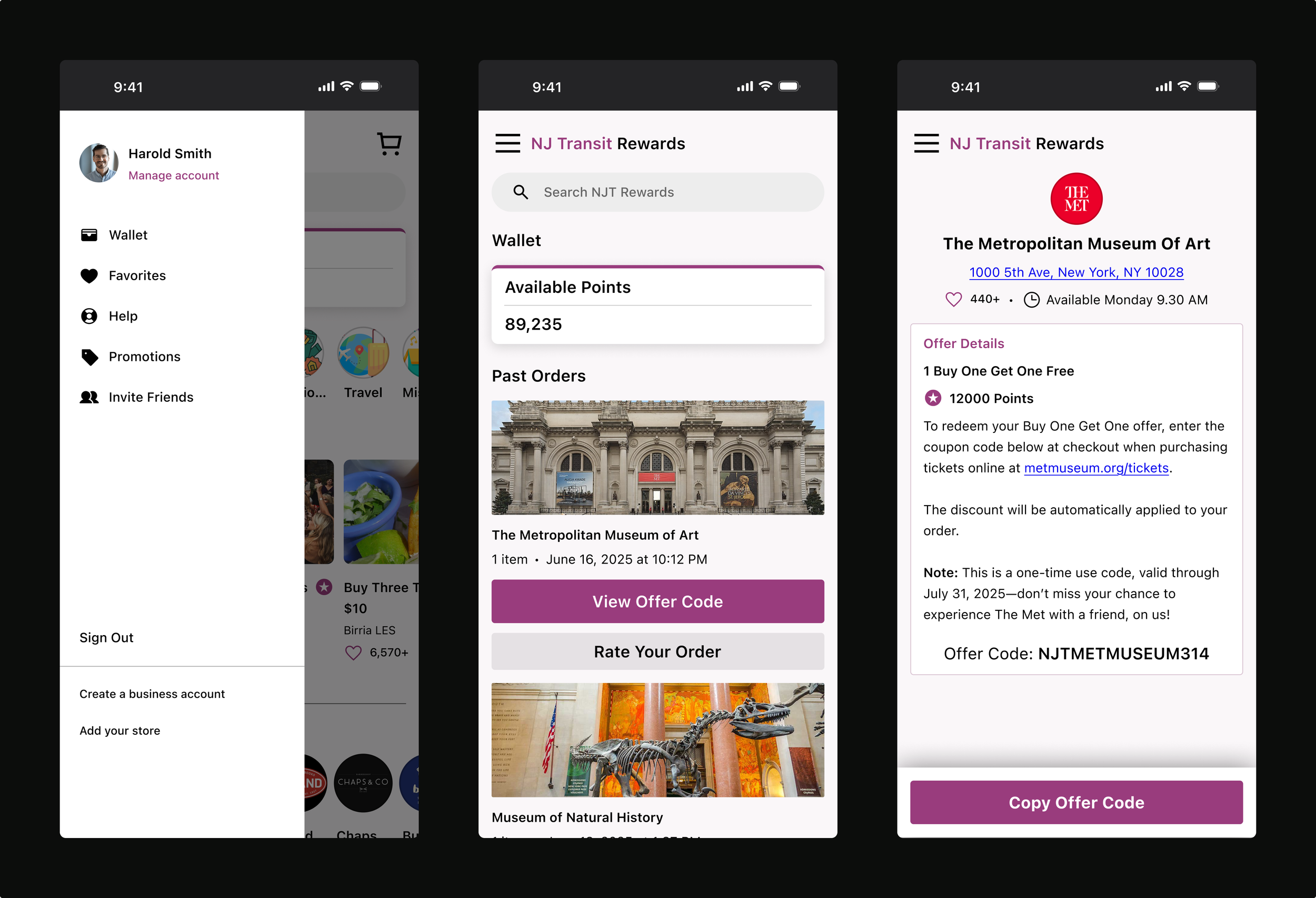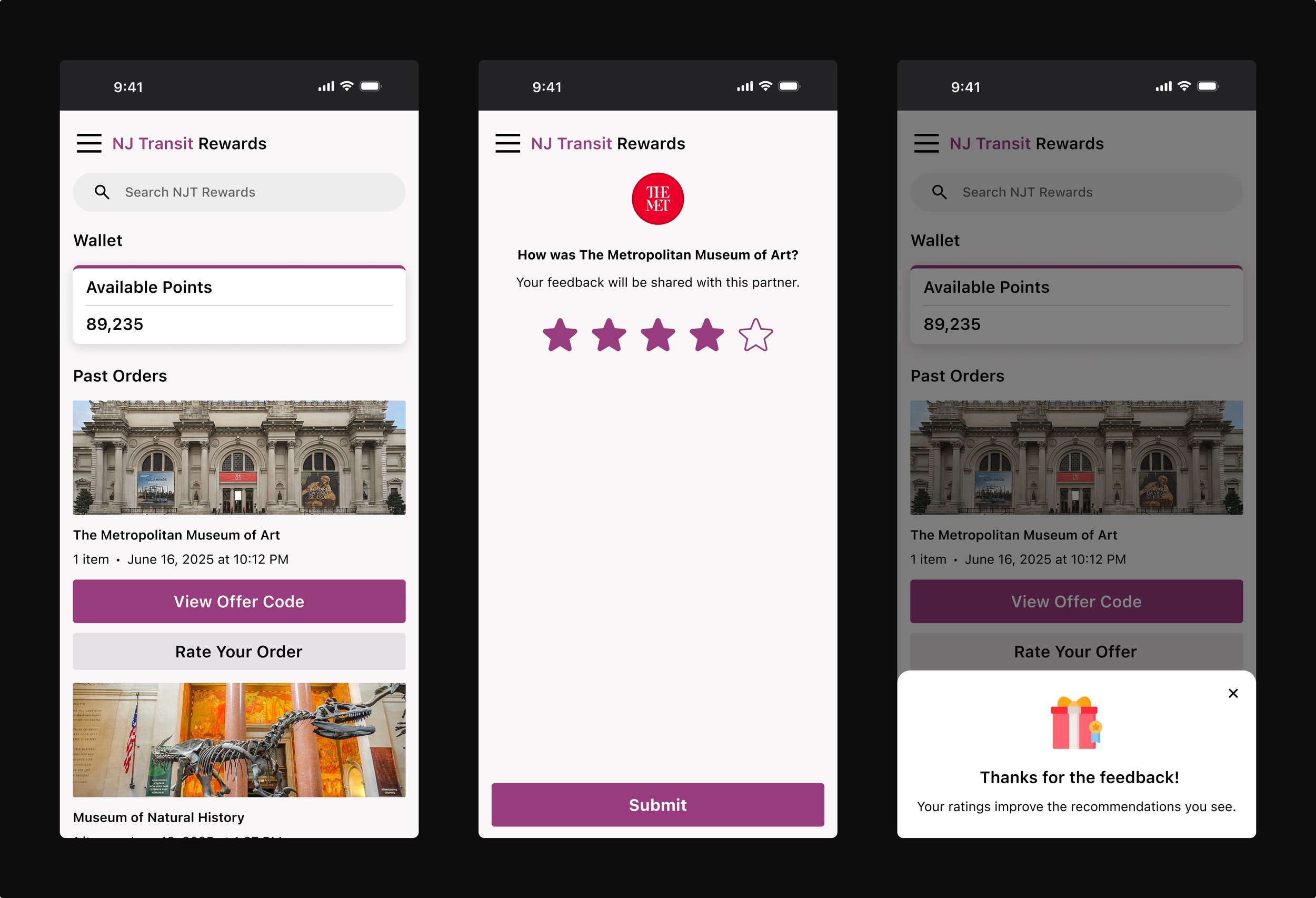NJT Rewards — Loyalty Points Program
Project Description
As part of the design team at NX3 Corporation I designed NJT Rewards, a platform that turned daily commutes into rewarding experiences. By making it easy for riders to earn and redeem perks, I helped boost engagement and loyalty.
Working closely with developers and product managers, I crafted a seamless user experience that brought the platform to life.
DESIGN PROCESS
Business Problem
NJ Transit aimed to increase rider loyalty and engagement through a new rewards initiative—NJT Rewards. The challenge lay in designing an intuitive platform that could integrate seamlessly into NJ Transit’s existing digital ecosystem without disrupting the rider experience. The solution needed to balance usability, accessibility, and operational efficiency, enabling users to effortlessly track, redeem, and engage with rewards while on the move.
To ensure the product met both business and rider needs, we conducted a series of design workshops and working sessions with the NJ Transit team. These collaborative sessions helped surface key operational constraints, user pain points, and stakeholder goals. The insights gathered guided our user flows, interface decisions, and technical integrations—ensuring the final experience was aligned with both NJ Transit’s infrastructure and the expectations of its daily commuters.
Understanding Loyalty Programs
To create an engaging rewards system, we researched best practices from e-commerce and transit loyalty programs, synthesizing key design considerations:
Ease of Use: Rewards should be simple to earn and redeem without added friction.
Personalization: Tailoring rewards to user behavior can drive deeper engagement.
Transparency: Users should clearly understand how points are earned and spent.
Seamless Integration: The platform should feel like a natural extension of NJT’s services.
Defining the Experience
Next, I created a user journey framework highlighting a user's interactions with the NJT Rewards ecosystems. I identified four main stages of the experience: Discovery (Pre-Purchase), Assurance (Purchase), Engagement (Redemption), and Reflection (Post-Redemption). I realized that my proposal could live beyond reward purchasing and play a more significant role in defining a user’s end-to-end experience. Through this, I identified the critical pain points where I can intervene.
APPLICATION INTERFACES
1. Discovery Stage: Pre-Purchase
Users can track their reward points, personalized offers, and transit deals directly from the NJT Rewards home screen, creating a centralized and intuitive experience.
Frictions: Reward information is currently scattered across emails, texts, and social media, requiring users to navigate multiple channels to check points or offers—often causing confusion and missed opportunities.
Positive Touchpoint: By consolidating key reward details on the home screen, users can easily view, redeem, and track offers tailored to their travel habits, resulting in a more seamless and engaging experience.
2. Assurance Stage: Purchase
When users choose to redeem a reward—such as discounted fares, partner offers, or free rides—they’re guided through a simple, in-app flow that allows them to confirm the reward, apply it to a trip, or save it for later use. All transactions are completed within the NJT Rewards interface, and digital confirmations are stored in the app.
Frictions: Traditionally, reward redemption in transit systems is fragmented, often requiring users to visit third-party portals or input promo codes manually—leading to confusion and drop-off.
Positive Touchpoint: NJT Rewards simplifies this by offering a step-by-step redemption and purchase experience that’s integrated into the core transit app.
3. Engagement Stage: Redemption
After purchasing or earning a reward, users can navigate to the Wallet section within the NJT Rewards web app to view and redeem their active offers. Each reward includes a unique QR code or offer code that can be easily scanned or applied at checkout—whether at NJ Transit terminals or partner vendors.
Frictions: Users often lose track of rewards when stored in emails or printed receipts. Our research showed that over 50% of users miss redemptions due to limited visibility and fragmented access.
Positive Touchpoint: By centralizing rewards in a dedicated Wallet helps simplify access. Apps with in-app reward storage and scannable codes see 42% higher redemption success (PYMNTS Loyalty Tracker), improving both ease and confidence during commutes.
4. Reflection Stage: Post-Redemption
After redeeming their rewards, users can rate their experience, providing valuable feedback that helps curate personalized recommendations for future offers and rewards.
Frictions: Without a clear post-redemption process, users may feel disconnected from their experience once the transaction is complete. This lack of engagement can result in missed opportunities to gather insights for future recommendations and limit users' connection to the platform.
Positive Touchpoint: By prompting users to rate their redemption experience, we not only enhance user engagement but also use this feedback to offer tailored, relevant rewards and promotions in the future. This reflective stage encourages users to feel heard, while also helping improve their overall experience, fostering a more personalized and enjoyable journey.
MOVING FORWARD
Since launching, NJT Rewards has seen promising traction—with over 200,000 riders actively engaging with the platform and 180+ local businesses partnering to offer exclusive perks. These early signals reaffirm our belief that reward-based engagement can meaningfully improve the transit experience while driving local economic growth.
Looking ahead, we see a significant opportunity to evolve NJT Rewards into a scalable SaaS solution that can be tailored and integrated with transit authorities across the country. By providing a flexible, modular system that supports localized rewards, we can help cities nationwide build stronger relationships with their riders—while making public transit feel more rewarding, accessible, and human.

